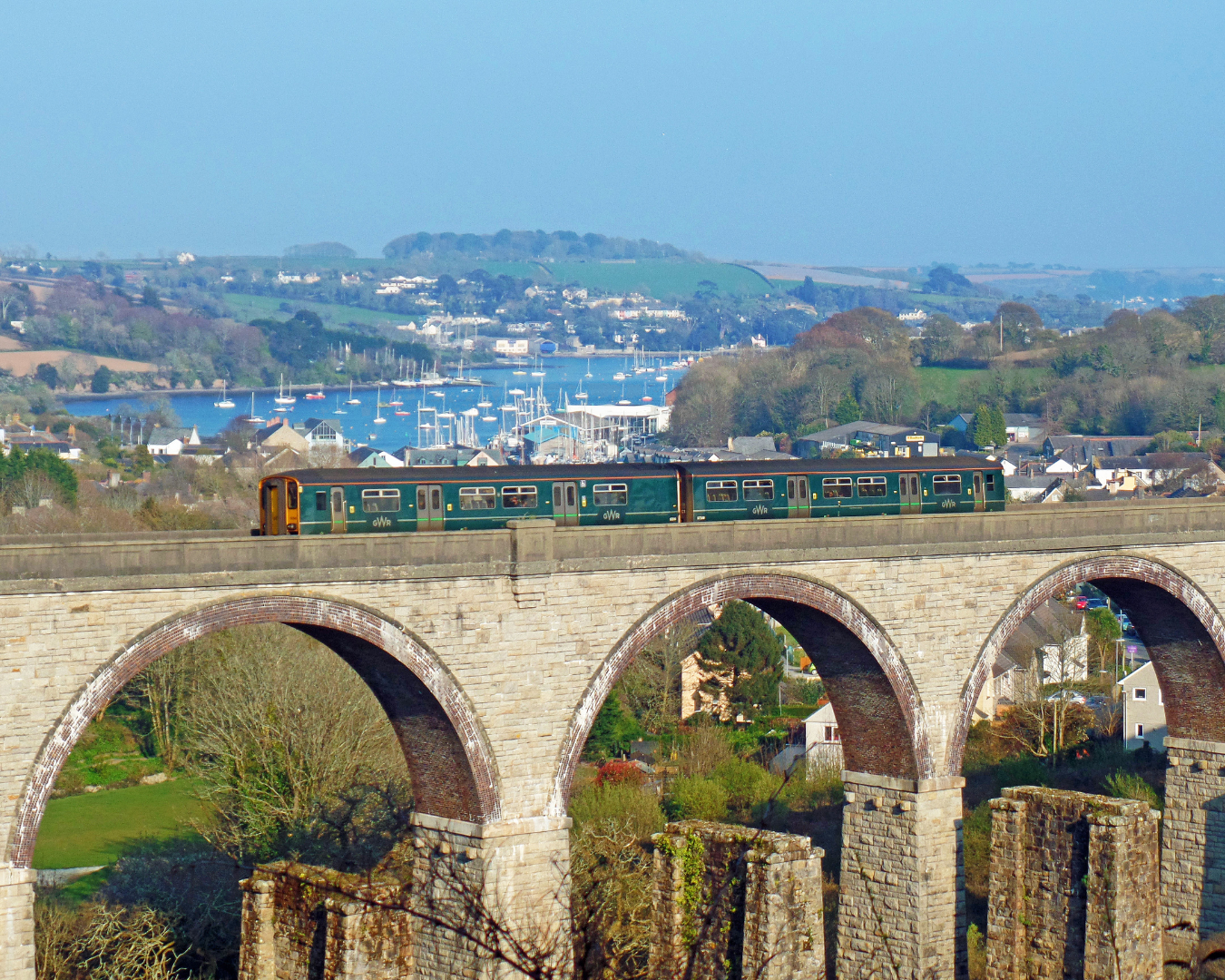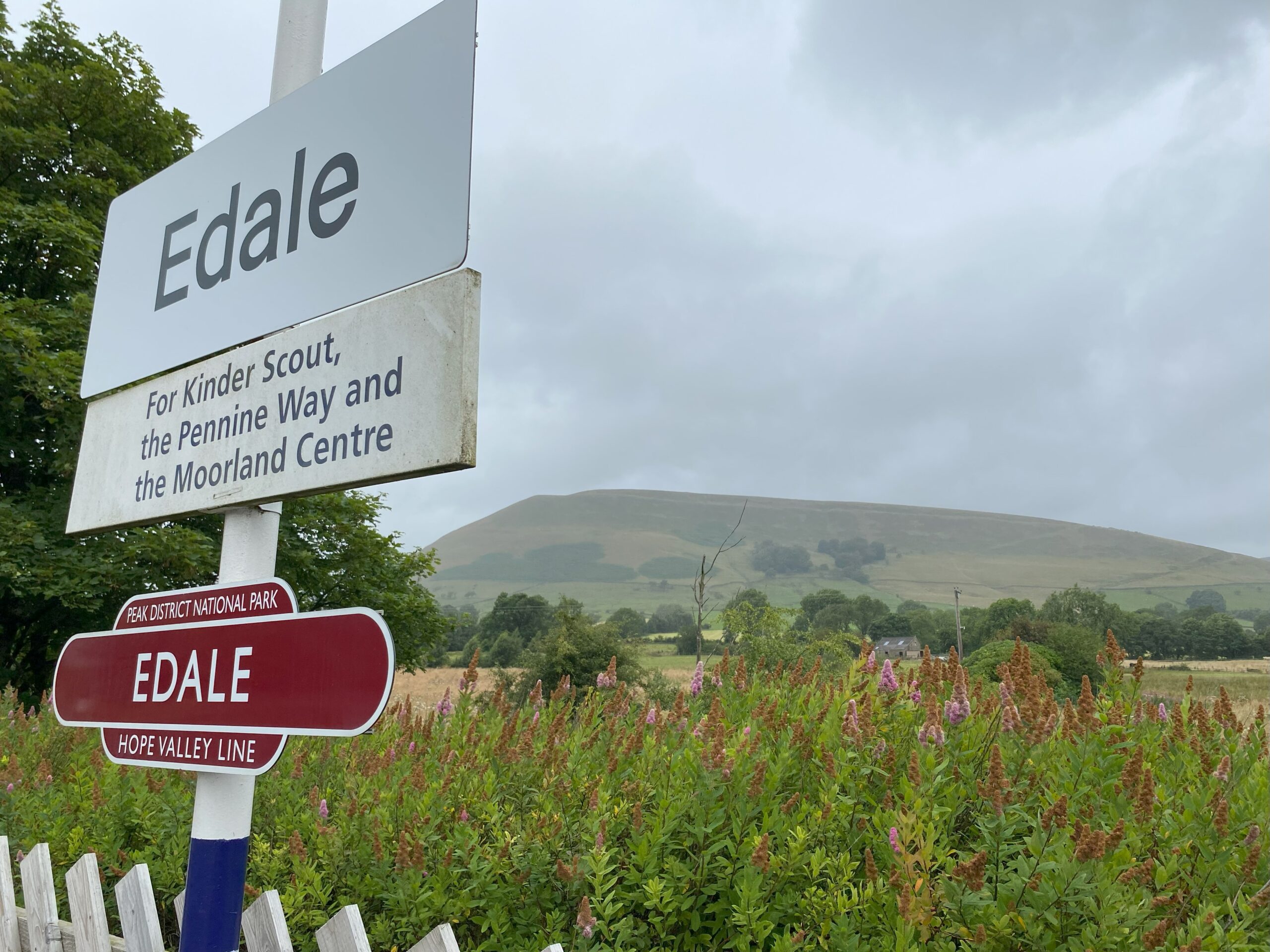Guest blog: scenic South Devon by rail
In this special guest blog we welcome Visit South Devon as they share with us why you should take the train to fully experience South Devon and have a greener adventure.
Perhaps one of the best ways to visit and explore South Devon is by train. There’s no need to worry about driving down the narrow winding roads and you can simply kick back and enjoy the scenery. Not to mention it’s much better for the environment!
Travelling by train has never been easier than it is now. We have a number of train stations dotted across the region with several main lines from all over the country pulling into Exeter St David’s station which then splits off to into our various branch lines. Head deep into the countryside or enjoy stunning coastal views via rail in South Devon.
The Great Western Mainline (Tiverton to Plymouth)
In Devon the first GWR mainline stop in Devon is Tiverton Parkway before heading into the main station of Exeter St David’s. The line then travels further southwest to Plymouth, stopping in Newton Abbot, Totnes and Ivybridge before crossing the Devon/Cornwall county boarder. Being a main line, Exeter St David’s can be reached from cities like Cheltenham and Birmingham via the Cross Country and Great Western Railway operators.
The line drives past the Exe Estuary and part of the South Devon coastline until it reaches Newton Abbot in which it then travels through luscious green countryside dissected by rolling hills and woodland to Totnes and further onto Plymouth.
The first Devonshire town you’ll pass through on this line is Tiverton, it’s brimming with history and heritage just waiting to be explored; with romantic castles, historic houses, and horse drawn barges. The Grand Western Canal passes through the town which is a great place to spend the day. Tiverton Canal Co are a living heritage attraction where visitors can travel down the water on a horse-drawn barge, hire a boat to paddle at their own pace, or enjoy a drink and ice cream at their unique waterside floating café bar.
Exeter and Plymouth are our two must-visit cities on this train line. Whilst they’re not huge in size, they are certainly jam-packed with plenty of things to see and do. Both have a rich history; Exeter has its historic Roman walls, Gothic Cathedral and Norman Castle, whilst Plymouth has a fascinating maritime history being the port where the Mayflower set off to explore America in 1620. Plymouth is also known as Britian’s Ocean City due to its location on the South Devon coastline with plenty of wonderful beaches to explore nearby. Exeter has its fair share of water-based activities as it’s situated on the River Exe perfect for paddleboarding and the Quay is a great place to dine with stunning river views.
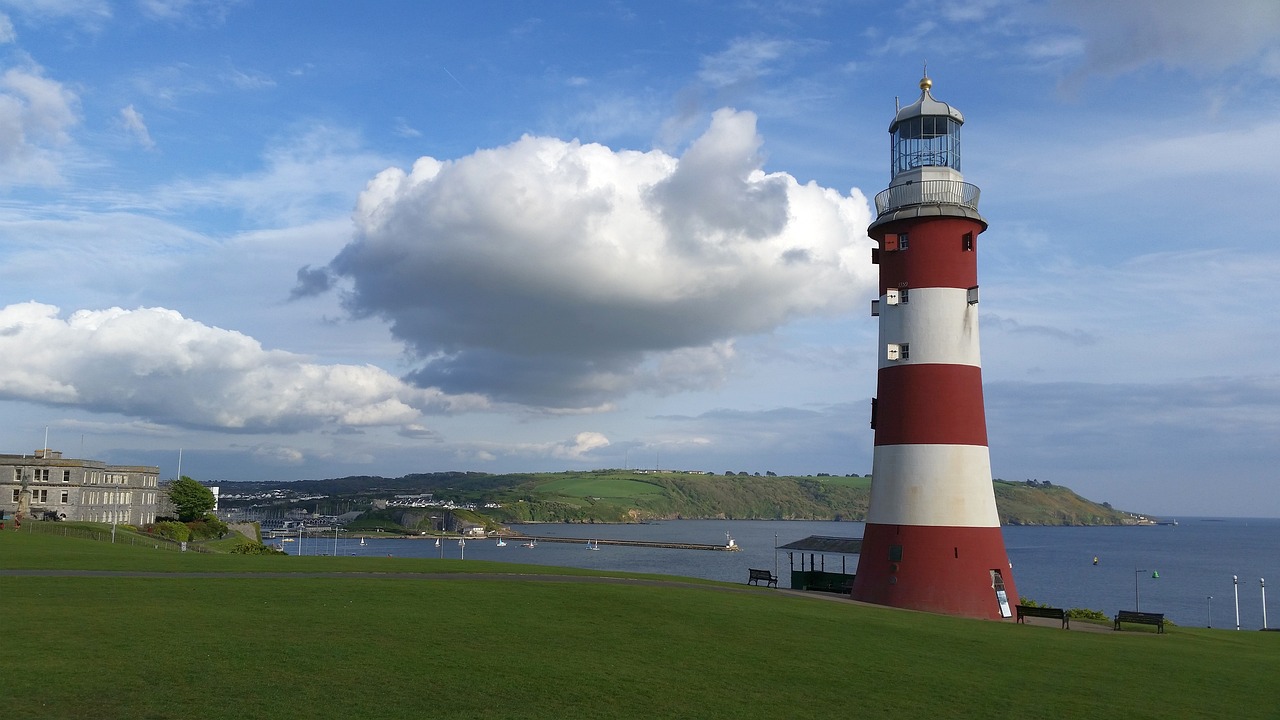
If you’re looking to stay somewhere with great access to Dartmoor then head to Ivybridge. It’s one of our wonderful gateway towns with plenty of accommodation, eateries and things to do, making the town a great base for a Dartmoor getaway. Another fantastic town on this line is Totnes. Humble yet bustling, Totnes’ high street is lined with a number of eclectic independent businesses selling homeware, organic produce, beautifully crafted jewellery and much more. It has a regular market on Fridays and Saturdays as well as food and craft markers throughout the year. It also sits picturesquely on the River Dart with lots of great walks nearby.
The Riviera Line
Extending from Exeter to Paignton, the Riviera Line is arguably one of the best-loved stretches of railway. It skirts along the Exe Estuary from Exeter to Dawlish Warren; and from here to Paignton you’re treated with the most unbeatable sea views.
It shares much of the same line as the GWR mainline but instead of following on to Plymouth at Newton Abbot it continues along the coastline through to Paignton, an incredible popular seaside resort.
Dawlish and Teignmouth are two fantastic destinations if you’re a family looking for a traditional seaside getaway. Both towns have a number of fantastic accommodation options, ranging from hotels and quaint B&Bs to holiday parks with plenty to keep your little ones entertained. Plus, there’s an abundance of cafés, restaurants and bars to keep your bellies full from morning to night. These towns sit next to each other on the train line and both boast unique attractions. Teignmouth has its historic Victorian Pier and lido, whilst Dawlish has lots of amusement arcades and a fantastic nature reserve filled with a number of fascinating and rare species of animals and plants at Dawlish Warren.
Towards the end of the train line, we have Torquay and Paignton, two more wonderful seaside towns. Again, both of these towns offer a fantastic beach getaway but also a number of interesting attractions. Like Teignmouth, Paignton is also home to a Victorian Pier, however this one is much larger than the one in Teignmouth. It also has Paignton Zoo nearby for animal lovers and the UKs biggest outdoor water park, Splashdown Quaywest for thrill-seekers. Torquay on the other hand is the birthplace of Agatha Christie. It has a vibrant harbourside complete with shops and eateries as well as several sandy beaches. Attractions in Torquay include Babbacombe Model Village, an immersive museum by the name of Bygones and a prehistoric cave.
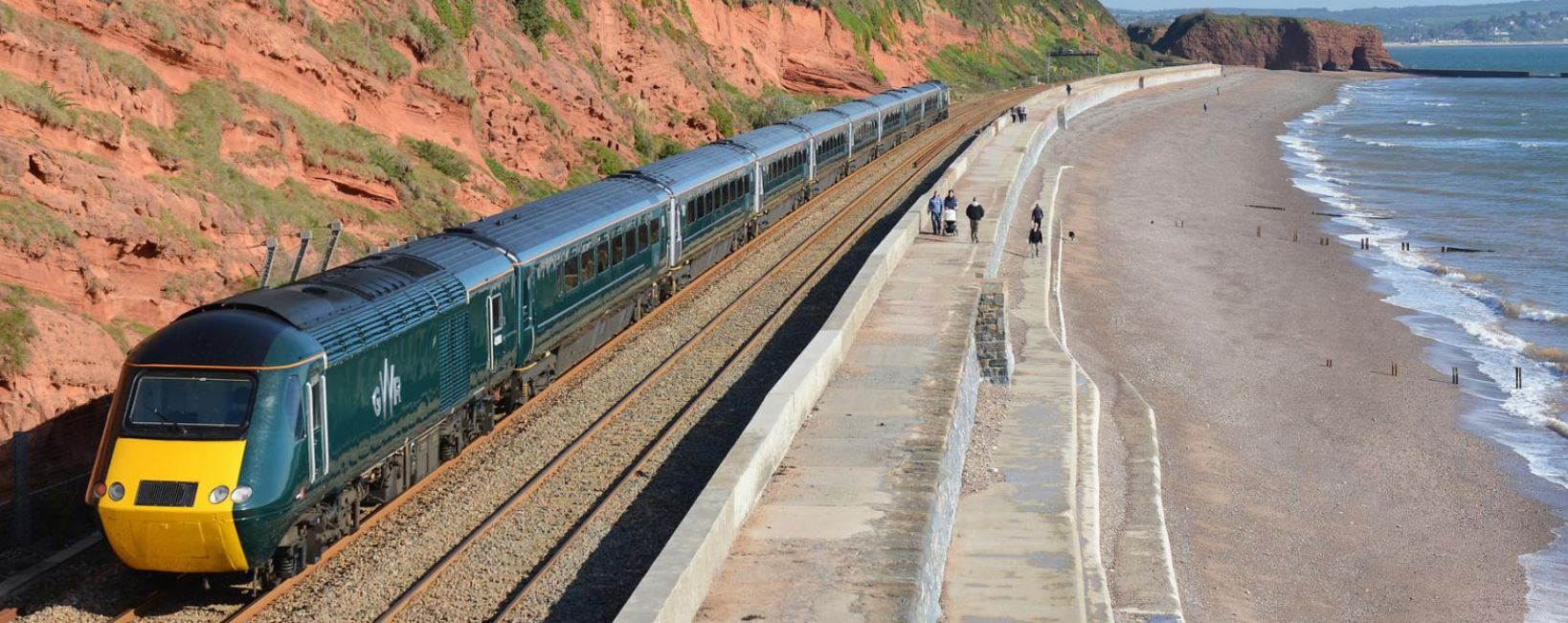
The Avocet Line
Glide along the Exe Estuary (the opposite side from the Riviera Line!) from Exeter to Exmouth, a wonderful seaside town in the East of Devon. It’s a busy, thriving and much-loved railway line that passes through some wonderful communities such as Topsham and Lympstone.
The line was built in 1861 and celebrated its 150th anniversary in 2011 so it’s a well-travelled line used by commuters and visitors. The Avocet Line is incredibly scenic, boasting idyllic views across the estuary to the villages on the opposite side; it’s also particularly popular with avid bird watchers as the Exe Estuary is a significant location for migrating birds, especially in the winter.
Exmouth is the last stop on this line. It’s a charming seaside town at the mouth of the Exe Estuary with a two-mile sandy beach, famous market and the gateway to the UNESCO World Heritage Jurassic Coast. There’s a welcoming community of people in Exmouth and a great number of independent businesses offering some of the best locally produced and sourced goods. It also has a fantastic art scene for those who love to get creative.
A couple of stops before Exmouth is a pretty town called Topsham. It sits picturesquely on the Exe Estuary and was once a thriving fishing port and ship-building centre. Today it’s still a thriving town, but in many different ways.
Topsham offers a great mix of boutique stores, waterside-pubs and quite a famous antique shop. It’s also a great base for exploring the rest of East Devon as it sits on the East Devon Way trail which is a waymarked path to walk or cycle through East Devon’s beautiful towns and villages.
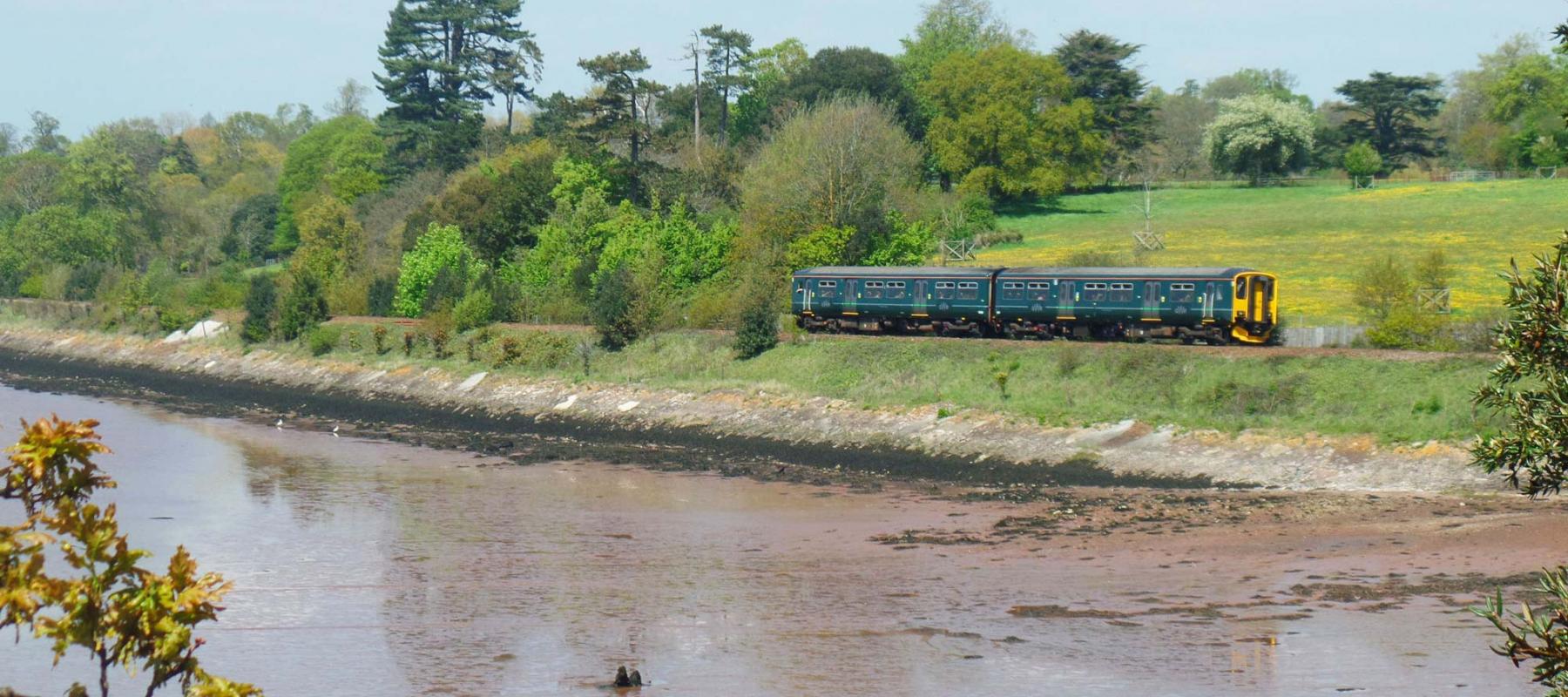
Photo: Mark Lynam
The Tarka Line
Heading towards the North of Devon is the Tarka Line, named as such after the otter in Henry Williamson’s book Tarka the Otter which is set in the area.
Starting at Exeter Central and stopping at St Davids the trains travel through unadulterated countryside and pass through Newton St Cyres, Crediton and Okehampton before venturing into North Devon.
Okehampton is actually the newest station to open on this line, or should we say reopen! It was utilised until the 70s with occasional heritage steam trains running through it until 2019, but officially reopened as a public line in 2021. The aim of this reopening was to better connect Exeter and Devon to Dartmoor via railway as Okehampton sits on the northern edge of Dartmoor National Park. Like Ivybridge on the main line, Okehampton makes a fantastic base for a Dartmoor holiday with accommodation, restaurants, cafés and bars aplenty. There’s also a historic and supposedly haunted castle here!
A lively market town, Crediton sits in the Mid Devon district surrounded by beautiful green countryside. The town centre boasts a busy high street and a magnificent church amidst the rolling hills that back the town. It’s only about 7 miles from Exeter and takes less than 15 minutes to travel here on the train.
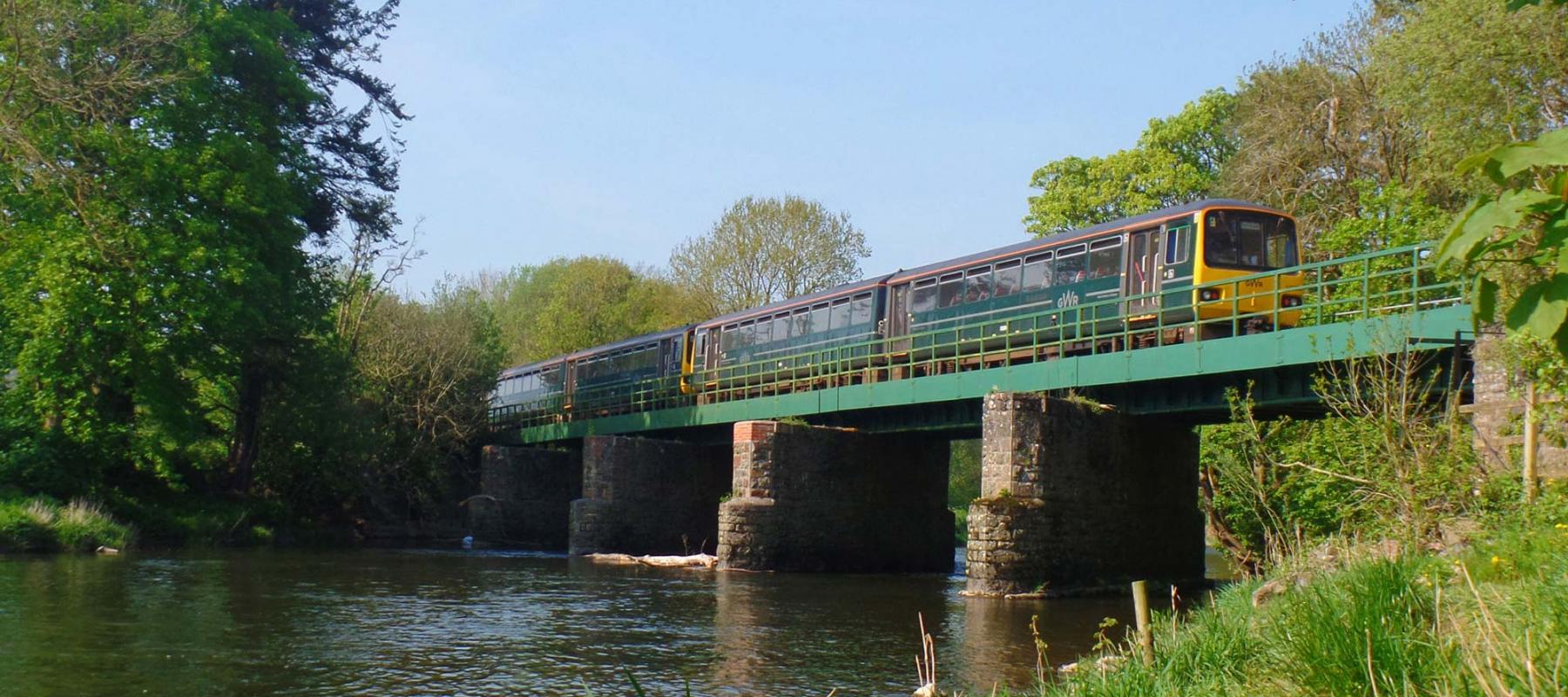
Photo: Mark Lynam
East Devon Line
The East Devon Line passes through the beautiful East Devon countryside as it heads out from Exeter through Cranbrook and Honiton to Axminster. It then continues as the West of England Line onwards to London Waterloo.
Honiton is somewhat known for being the antique capital of Devon, being home to a number of fantastic little thrift and second-hand shops. It has a lovely gallery, plus a church that stands tall above the buildings and pinpoints the centre of town. Set in the East Devon National Landscape, the town is encompassed by luscious countryside, plus there are several historical landmarks nearby such as Iron Age hill forts and camps. Centred around a church, Axminster is the perfect place to visit for a morning amble and a spot of lunch. It’s a quintessentially British town with meandering streets, intersecting alleyways and independent businesses dotted in between, full of character and charm. Axminster is also located in the East Devon Area of Outstanding Natural Beauty so there’s plenty of great countryside footpaths and cycle routes to explore.
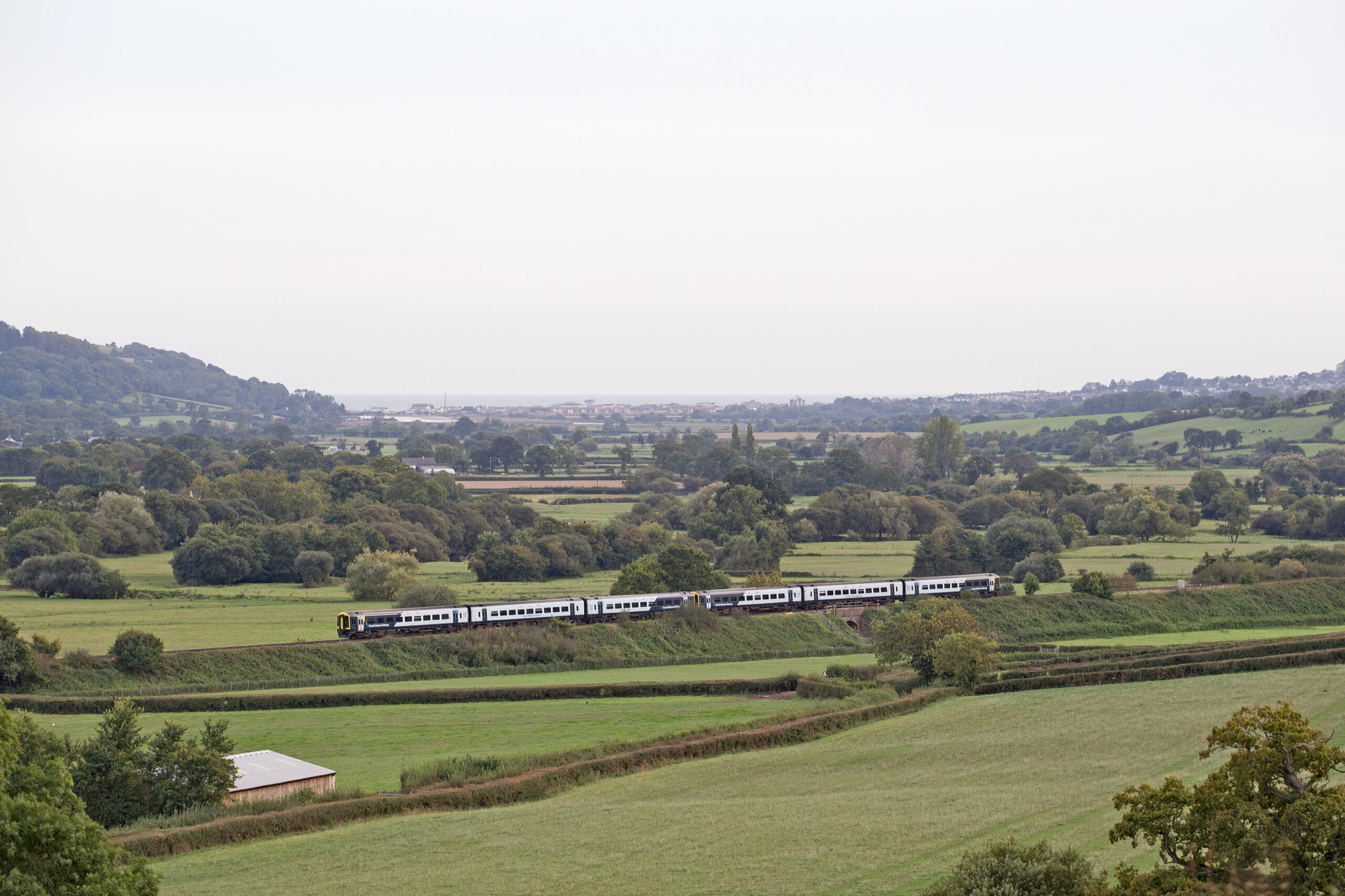
Photo: Antony Christie
Rail Attractions
There used to be many other stations and lines in South Devon but unfortunately they closed during the Beeching cuts in Britain in 1960s. Thankfully though, some of these have been reopened as attractions and feature some of the most historic steam engines in England, offering a unique and nostalgic way of exploring South Devon.
South Devon Railway
South Devon Railway is one of those lines. Recreating the golden age of travel between the 1903s and 60s you can take a trip back in time on a traditional Steam Train from Totnes to Buckfastleigh.
Buckfastleigh is another town on the edge of the moors. It’s a unique and historic market town dominated by the prestigious Buckfast Abbey, home to a Benedictine monastery. There’s some wonderful attractions nearby such as the Buckfastleigh Butterfly Farm and Dartmoor Otter Sanctuary near the centre of town and Pennywell Farm on the outskirts.
As well as travelling along the River Dart through Staverton, you can also find out more about the history of steam railways in Devon in their museum and station in Buckfastleigh through a wide range of artefacts including photographs, timetables and posters. There’s a gift shop and café here too. Even if you aren’t able to take a trip on one of these trains, you’re free to look around the station and witness the excitement of the engine billowing smoke whilst pulling up!
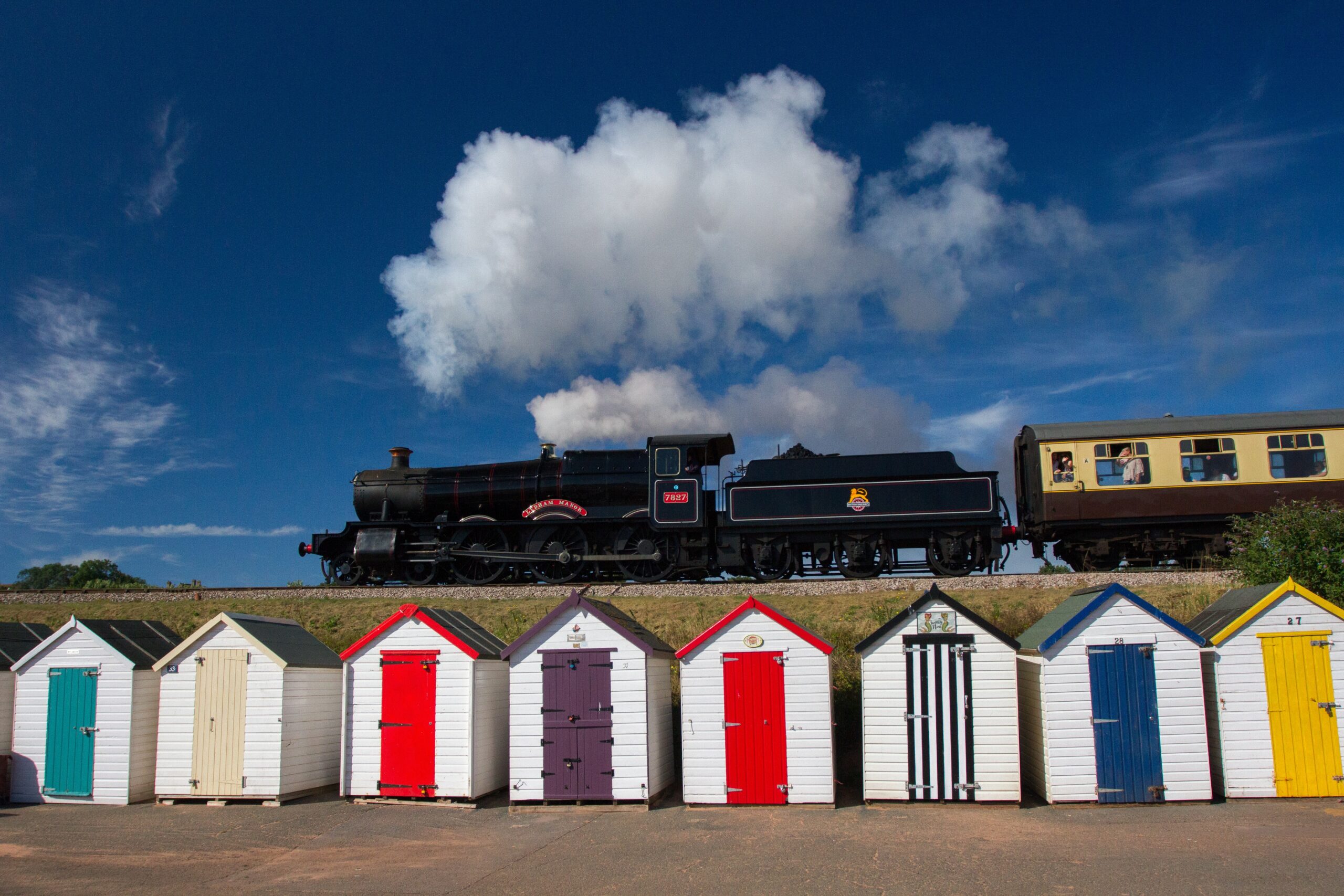
Dartmouth Steam Railway and River Boat Company
Another fantastic Steam Railway in South Devon is the Dartmouth Steam Railway. The line starts in Paignton and despite its name, it doesn’t actually stop in Dartmouth, but rather its neighbour Kingswear, on the opposite side of the River Dart.
From Kingswear you can then catch the ferry to take you over to the much-loved maritime town of Dartmouth. People flock to Dartmouth all year-round but it’s particularly popular in the warmer months as the estuary is simply beautiful when the sun is shining down on it. There are chic restaurants, timely tea rooms and cosy inns to dine and when it comes to laying your head at night, there’s lots of places to choose from.
Rather than getting the ferry over to Dartmouth you could explore the Kingswear side of the River Dart. Greenway, which was once Agatha Christie’s holiday home and now owned by the National Trust, can be found up-stream in Galmpton whilst Coleton Fishacre, another National Trust property is located closer towards the mouth of the river.
Dartmouth Steam Railway and River Boat Company also offer ‘Round Robin’ trips which allow you to explore more of the area via a boat trip to Totnes and bus back to Paignton.
Seaton Tramway
Okay, so this might seem like a bit of an odd one to include, but we certainly think it’s relevant enough! Seaton Tramway is a narrow-gauge heritage tramway in East Devon and it’s a very popular attraction for those looking to explore Devon in a unique way.
The tramline travels from Seaton along the Axe Estuary and River Coly through the village of Colyford before stopping in the ancient town of Colyton, the line was previously a branch line but was due to close due to the Beeching “rationalisation” in the 60s. The stretch was purchased by a tram enthusiast and Seaton Tramway was born. Seaton is a fantastic little coastal town, it has a long shingle beach and clear blue waters, as well as a lively town centre.
And there we have it – a short round up of all the scenic train lines in Devon, plus places that you absolutely must visit! You can find out more about South Devon by heading to our website here. We have lots of fantastic information regarding where to stay, places to eat and things to do. You can also follow us on Facebook, X/Twitter and Instagram for even more holiday inspiration.

